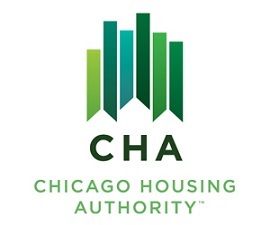CHICAGO – Dec. 7, 2016 – (RealEstateRama) — The Chicago Housing Authority has proposed a pilot program for the Housing Choice Voucher (HCV) program that would provide voucher holders with intensive services and job training to determine if a time limit on voucher use is feasible, potentially making more vouchers available sooner to those waiting for affordable housing.

“In Chicago and across the nation, an ever-greater number of people are rent-burdened and applying for rental assistance and, because the prospect of increasing the number of available rental subsidy vouchers is unlikely, CHA is exploring whether, if by creating time limits on HCV holders and providing intensive social and job training services to them, individuals and families can realize the increased income and stability to move confidently out of the HCV program and pay market rent,” CHA CEO Eugene Jones, Jr. said.
As a HUD-designated Moving to Work (MTW) agency, the CHA has the flexibility to explore innovative programs like this Time Limit Demonstration Program proposal the agency submitted to HUD as part of its 2017 Moving to Work Annual Plan.
In 2014, when CHA opened the HCV waiting list, there were more than 280,000 applications for a voucher and today, there are more than 42,000 people who still remain on the list waiting for housing. With this pilot program, CHA hopes to determine if residents, with support from CHA’s Family Self Sufficiency and case management programs, can more easily and quickly move up the economic ladder so they are no longer in need of the HCV subsidy.
The pilot program involves 100 households with a range of incomes selected from the waiting list who agree to enroll in the pilot program. This is not a program for seniors, persons with disabilities or others who need long term assistance. It is important to note that there is a safety net for anyone who does choose to participate in the pilot program. Anyone who needs a subsidy at the end of the pilot time period will be allowed to remain in the program, with the only difference being that their subsidy would be frozen at their current level.
“This is another way we are working to create some flexibility in our programs and potentially increase access to vouchers so more people would be able to get housed more quickly,” Jones said. “We remain committed to identifying innovative ways that balance the need for housing support with the ever-growing demand for affordable housing among low income individuals and families in Chicago.”
The pilot program would not affect current voucher holders or change their housing support in any way, Jones noted.
The CHA proposal includes a time limit of eight years for an HCV subsidy (with a two-year extension option) to determine it this timeframe would support a voucher holder’s ability to move beyond housing subsidy support and gain greater economic mobility when paired with mandatory services. CHA’s voucher allotment is provided via funding from HUD; the agency does not receive a specific number of vouchers, and as a result, the efficient allocation of resources to support the vouchers is an important element that needs to be considered.
The proposal must be approved by HUD before CHA can proceed with it. CHA expects to receive a decision from HUD sometime in early or mid-2017. CHA would then present the proposal for approval to the CHA Board of Commissioners and discuss it with residents, taking the necessary time needed to implement the program before it would take effect. CHA has already held public meetings and received comments on the proposal.
Press contacts:
Office of Communications – Chicago Housing Authority
Molly Sullivan: (312) 786-3344; msullivan (at) thecha (dot) org
Matthew Aguilar: (312) 935-2646; maguilar (at) thecha (dot) org






